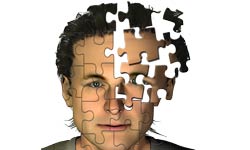How Facial Recognition Systems Work

Anyone who has seen the TV show "Las Vegas" has seen facial recognition software in action. In any given episode, the security department at the fictional Montecito Hotel and Casino uses its video surveillance system to pull an image of a card counter, thief or blacklisted individual. It then runs that image through the database to find a match and identify the person. By the end of the hour, all bad guys are escorted from the casino or thrown in jail. But what looks so easy on TV doesn't always translate as well in the real world.

In 2001, the Tampa Police Department installed police cameras equipped with facial recognition technology in their Ybor City nightlife district in an attempt to cut down on crime in the area. The system failed to do the job, and it was scrapped in 2003 due to ineffectiveness. People in the area were seen wearing masks and making obscene gestures, prohibiting the cameras from getting a clear enough shot to identify anyone.
Boston's Logan Airport also ran two separate tests of facial recognition systems at its security checkpoints using volunteers. Over a three month period, the results were disappointing. According to the Electronic Privacy Information Center, the system only had a 61.4 percent accuracy rate, leading airport officials to pursue other security options.

Humans have always had the innate ability to recognize and distinguish between faces, yet computers only recently have shown the same ability. In the mid 1960s, scientists began work on using the computer to recognize human faces. Since then, facial recognition software has come a long way.
In this article, we will look at the history of facial recognition systems, the changes that are being made to enhance their capabilities and how governments and private companies use (or plan to use) them.
Hi! I am a robot. I just upvoted you! I found similar content that readers might be interested in:
https://electronics.howstuffworks.com/gadgets/high-tech-gadgets/facial-recognition.htm